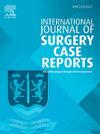Owner-inflicted ocular injuries: A novel study of dog bite trauma caused by familiar pets: A case series
IF 0.6
Q4 SURGERY
引用次数: 0
Abstract
Introduction and importance
This novel study aims to investigate ocular injuries caused by dog bites inflicted by the victims' own pets. The study examines the types of injuries, the breeds of dogs involved, the demographics of the victims, and the clinical management strategies used. It also seeks to highlight the need for preventive measures and the importance of responsible dog ownership in minimizing these injuries.
Case presentation
A retrospective review of medical records from Shiraz Eye Center, Khalili Hospital, between 2022 and 2024 was conducted for patients who suffered ocular trauma from bites by their domestic dogs. Only patients with identifiable dog breeds were included. Data collected included patient age, gender, injury type, surgical intervention, medical management, outcomes, and complications. All patients underwent surgery within 2 days of injury and were followed up for at least 3 months. The majority of patients (71 %) were between 12 and 28 years old. Rottweilers and German Shepherds were the most commonly involved breeds. The most frequent injury was lower canaliculi lacerations (57 %), with some cases presenting both lower and upper lid margin lacerations. Surgical interventions primarily involved canalicular repair with Crawford stents and lateral tarsal strip procedures. Complications included ectropion and telecanthus in two cases, but no visual impairments were noted.
Discussion
This study underscores the significant risk of ocular injuries inflicted by owners' own dogs, with young individuals being the most affected group. Rottweilers and German Shepherds were the most frequently involved breeds, but smaller breeds like Pomeranians also caused serious injuries. Lower canalicular lacerations were the most common injury, reflecting the anatomical vulnerability of the central facial region. Timely surgical intervention, primarily canalicular repair with Crawford stents and lid margin repairs, yielded positive outcomes with minimal complications. These findings emphasize the importance of responsible pet ownership, public education, and preventive strategies to reduce such injuries. Additionally, the psychological impact of these injuries, particularly in children, remains an area requiring further research.
Conclusion
This study highlights the risks of ocular injuries from dog bites inflicted by familiar pets. It emphasizes the importance of responsible dog ownership, public education, and preventive measures, particularly for vulnerable groups. Further research into the psychological impact of these injuries and larger studies are needed to develop effective prevention strategies.
求助全文
约1分钟内获得全文
求助全文
来源期刊
CiteScore
1.10
自引率
0.00%
发文量
1116
审稿时长
46 days

 求助内容:
求助内容: 应助结果提醒方式:
应助结果提醒方式:


